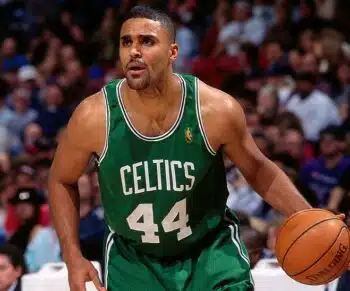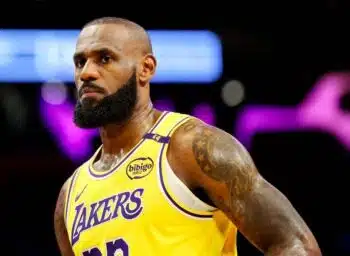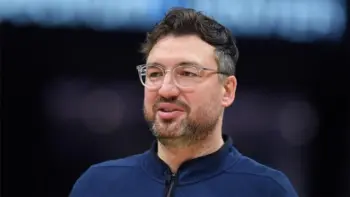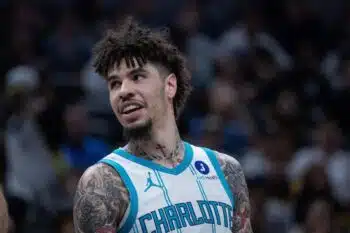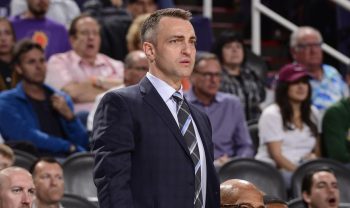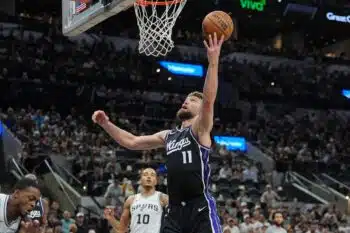Research Features
NBA Draft 2025: Ideal Selections for Each First Round Pick

With less than two weeks to go until the 2025 NBA Draft, plenty of insider mock drafts will keep circling the draft space. Even with reliable intel and sourcing, predicting how any draft will fall is a near-impossible endeavor
While I can’t accurately predict what each team will do, I can determine what I would do if I sat in the GM chair for each team. Let’s dive into a full first-round mock draft, with each selection based solely on my evaluation of the 2025 class and each team’s needs, timeline and direction.
1. Dallas Mavericks – Cooper Flagg, F, Duke
There isn’t much to debate here, as Flagg is the clear top prospect in the class and one of the best prospects of the last 25 years. He instantly provides the Mavs a valuable two-way contributor with potential to grow into an offensive engine and one of the NBA’s best defenders.
2. San Antonio Spurs – Dylan Harper, G, Rutgers
Despite a possibly clunky fit with De’Aaron Fox and Stephon Castle, the Spurs won’t pass on a player as talented as Harper. His elite slashing fuels a primary initiator ceiling and his shooting and defensive potential add some off-ball value. If the Spurs trade for a high-end star, that could improve Harper’s immediate fit, but this is a long-term pick.
3. Philadelphia 76ers – Derik Queen, F/C, Maryland
The draft widens dramatically after the top two, but consensus doesn’t often mock Derik Queen this high. Philadelphia needs more star talent and Queen brings that ceiling with his elite advantage creation and interior scoring. It’s a sensible offensive fit for Queen with great guards and spacers around him.
4. Charlotte Hornets – Kon Knueppel, F, Duke
Knueppel makes a strong case as the highest feel player in the class. That, combined with his elite outside shooting, gives him a higher ceiling than many credit him for. He’d add tons of value as an off-ball scorer and secondary playmaker next to LaMelo Ball. Even if his athletic limitations hold him back some, Knueppel is one of the safest players in the draft.
5. Utah Jazz – Collin Murray-Boyles, F, South Carolina
A Utah team which ranked near the bottom of the league in defense over the past three seasons adds a modern defensive anchor. Murray-Boyles’s unorthodox frame and skillset has led to some skepticism, but he’s a special defensive prospect. His strength and playmaking offer some offensive upside, and a creative offensive coach like Will Hardy pairs well with a high feel player like Murray-Boyles.
6. Washington Wizards – Jeremiah Fears, G, Oklahoma
Washington has built a promising collection of young pieces, but lacks a true offensive engine. Their rangy, tall defenders help the viability of a shorter guard and will benefit from Fears’s excellent shot creation. His excellent shooting indicators (free-throws, mid-range shots, touch) make him a promising shooting bet and a scary offensive player with phenomenal burst and shift.
7. New Orleans Pelicans – Tre Johnson, G, Texas
Johnson is the draft’s best pure shooter, spraying in threes on difficult movement shots and contested pull-ups. Though Johnson had the ball in his hands for much of his time at Texas, his shooting and passing skill should help him add off-ball value in the NBA. An in-flux Pelicans team would benefit from an easily projectable scorer like Johnson.
8. Brooklyn Nets – VJ Edgecombe, G, Baylor
A rebuilding Nets team will want to bet on Edgecombe’s ridiculous athleticism to help improve his half-court creation. Though I’m a bit lower on his creation ceiling, Edgecombe’s excellent defensive and shooting projection elevate his floor. He makes sense for a fast-paced, aggressive young Brooklyn team that can feed Edgecombe the reps he’ll need to improve.
9. Toronto Raptors – Khaman Maluach, C, Duke
Maluach offers the Raptors a high-ceiling defensive anchor prospect to boost an already promising unit. He’ll need plenty of development physically and mentally, but the Raptors have proven their ability to improve raw, toolsy players. Any shooting improvement would greatly help his offense, but his excellent touch and finishing will add value early.
10. Houston Rockets – Ace Bailey, F, Rutgers
Houston will take the best talent on the board, adding another floor spacer to a clogged offense. Though Bailey will land much higher in the actual draft, he’d fit best on a team that won’t rely on him to score and create. His high defensive ceiling, especially as a rim protector, adds even more juice to an already exceptional Houston defense.
11. Portland Trail Blazers – Jase Richardson, G, Michigan State
With Anfernee Simons constantly floating in trade rumors, the Blazers would benefit from adding a third backcourt player alongside Scoot Henderson and Shaedon Sharpe. Richardson is a seasoned off-ball scorer who will thrive playing off of on-ball teammates. He plays bigger than his size on defense and Portland’s cavalry of athletic wings will help cover for any limitations.
12. Chicago Bulls – Thomas Sorber, C, Georgetown
Sorber and the Bulls are one of my favorite theoretical pairings in the draft. Chicago desperately needs defensive help in the frontcourt and Sorber’s paint protection could transform that unit. His quick floor processing, versatile playmaking and touch make him an ideal complementary big even without huge scoring upside.
13. Atlanta Hawks – Kasparas Jakucionis, G, Illinois
I’d love to give the Hawks a center, but the value isn’t there at this stage of the draft. We’ll add the best player available and another potential backcourt creator to take some pressure off of Trae Young. Jakucionis has to clean up his handle and turnovers, but his excellent passing feel and shotmaking project a high ceiling.
14. San Antonio Spurs – Nique Clifford, F, Colorado State
Clifford’s polished, versatile skillset fits with an ascending Spurs team that will aim to contend as soon as possible. He’s an underrated elite playmaker who developed into a reliable outside shooter and complementary driver. Clifford has more upside than most 3-and-D wing prospects, but he can fill that role early in San Antonio.
15. Oklahoma City Thunder – Noa Essengue, F, Ulm
Oklahoma City doesn’t need more immediate contributors, so they’ll invest in a high-ceiling development project in Essengue. He’ll need to refine his half-court offense and find ways to contribute with the ball, but incredible measurables, transition scoring and on-ball defense are traits worth building around, especially considering his youth.
16. Memphis Grizzlies – Walter Clayton Jr., G, Florida
After trading away Desmond Bane, Memphis will need more dynamic offensive players and few score and create more dynamically than Clayton. He’s a truly elite shooter with plenty of burst to create downhill and find open teammates. Though Clayton often dominated the ball in college, his movement shooting and quick relocations will let him thrive off-ball.
17. Minnesota Timberwolves – Noah Penda, F, Le Mans
Throughout the last two postseasons, Minnesota’s collective playmaking limited their offensive success. Penda must improve his jumper to survive on offense, but he’s a snappy decision maker who will bring feel and connective playmaking. Special off-ball playmaking makes him one of the class’s best defenders.
18. Washington Wizards – Carter Bryant, F, Arizona
Bryant makes sense for a rebuilding team like Washington who are willing to let young players play high minutes through mistakes. He’ll need plenty of reps to add more to his offensive repertoire outside of spot-up shooting, but Bryant should add some defensive value early as a help defender.
19. Brooklyn Nets – Cedric Coward, F, Washington State
Coward flew up boards as the draft process progressed and the praise is rightful. He’ll need time to become an NBA contributor, but Coward’s great shooting and defensive potential make him an easy player to bet on. Unique flexibility and touch for his size could suggest some off-dribble scoring upside at Coward’s peak.
20. Miami Heat – Will Riley, F, Illinois
Riley’s ball skills and shot versatility as a 6’8 wing make him an intriguing offensive bet. Though his slight frame will necessitate physical development and could limit his ceiling, Riley’s shotmaking, live dribble passing and physicality on both ends are traits worth betting on, especially for a strong development team like Miami.
21. Utah Jazz – Adou Thiero, F, Arkansas
Utah strengthens its defense even further by drafting Thiero, who has a strong case as the draft’s most dangerous defensive playmaker. His elite strength and athletic twitch help him stand out on offense too, creating easy offense as a slasher. He’ll need to improve his outside shot to reach his offensive ceiling, but Theiro’s high-end traits are worth investing in for a wing-needy Jazz team.
22. Atlanta Hawks – Ryan Kalkbrenner, C, Creighton
The Hawks get their center! Though Onyeka Okongwu improved this season, the Hawks will benefit from Kalkbrenner’s towering frame. He’ll immediately improve Atlanta’s interior defense and give Young another great finisher and budding floor space to work with on offense.
23. Indiana Pacers – Rasheer Fleming, F, St. Joseph’s
Indiana massively improved their defense over the last two seasons and will want to continue adding talent on the wing. Fleming’s incredible mobility, size and length make him a lethal perimeter defender who adds some offensive value with spot-up shooting. He’d mesh well with Indiana’s hyper-aggressive defensive ethos.
24. Oklahoma City Thunder – Drake Powell, F, North Carolina
Just as they did by drafting Essengue, the Thunder swing on another high athletic ceiling wing later in the first round. Powell’s explosiveness, speed and lateral athleticism are all top-tier, suggesting enormous defensive upside. The Thunder can focus on improving his outside shot, forming him into another disruptive perimeter defender for the team to deploy.
25. Orlando Magic – Ben Saraf, G, Ulm
Saraf is one of the better pick-and-roll initiator prospects in the class, breaking defenses down with a deceptive handle and great passing feel. Doubling up on offense makes sense for a defensively slanted Orlando team.
26. Brooklyn Nets – Asa Newell, F/C, Georgia
The Nets will need foundational role players to build with their future stars and Newell brings that on both ends. His switching versatility on defense and offensive rebounding and play finishing on offense should help him add some value early on in his career.
27. Brooklyn Nets – Egor Demin, G, BYU
Though Demin’s lack of handling, shooting consistency and creation make offense challenging, his special passing is still worth a first-round investment. The Nets have plenty of time to wait for Demin to improve his scoring and add strength to better hold up on the defensive end.
28. Boston Celtics – Nolan Traore, G, Saint Quentin
Traore’s scoring efficiency causes some concern, though we shouldn’t discount his huge offensive load as a teenage pro point guard. His elite speed, great passing and versatile defensive chops are bankable traits with his outside shooting as a major swing skill. Boston will bet on his talent here, hoping he can eventually find a home in their backcourt rotation.
29. Phoenix Suns – Johni Broome, F/C, Auburn
More than anything, Phoenix needs more capable NBA players. Broome, who has been arguably the best player in the country over the past few seasons, will add value as a passer, finisher and defensive playmaker. His size could limit his ability to play center in the NBA, but the Suns will benefit from his two-way skill set.
30. Los Angeles Clippers – Kam Jones, G, Marquette
Jones is one of the better offensive players in the class, thriving as a finisher, off-dribble shotmaker and high-volume passer. He should bounce back as a 3-point shooter after a down final college season, but the Clippers could use his offensive punch to help out James Harden and Norman Powell.
